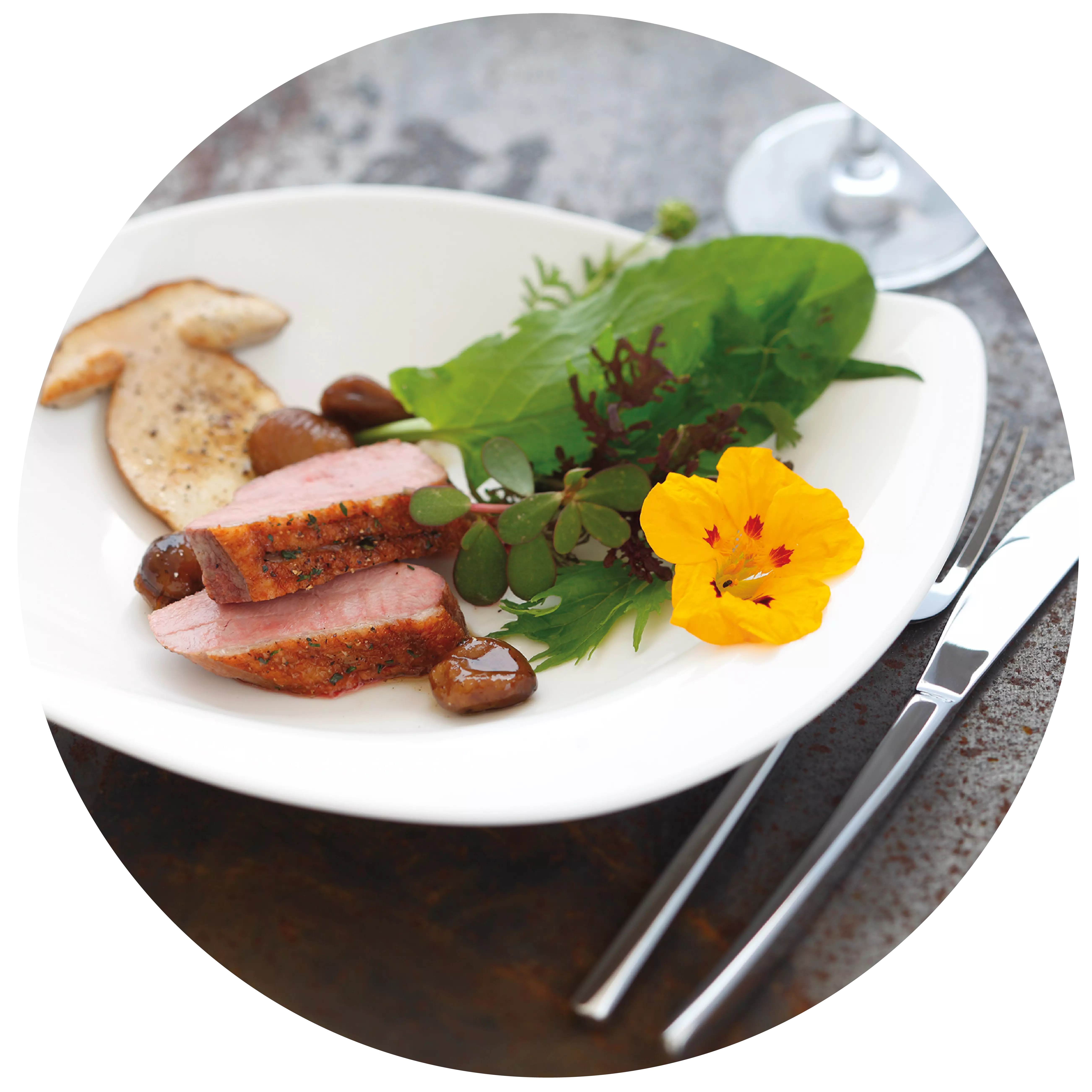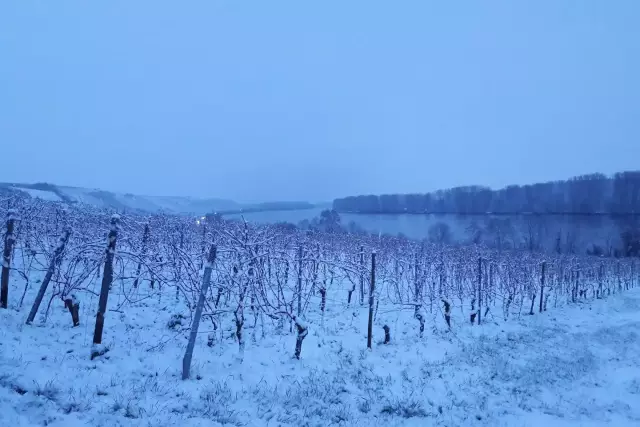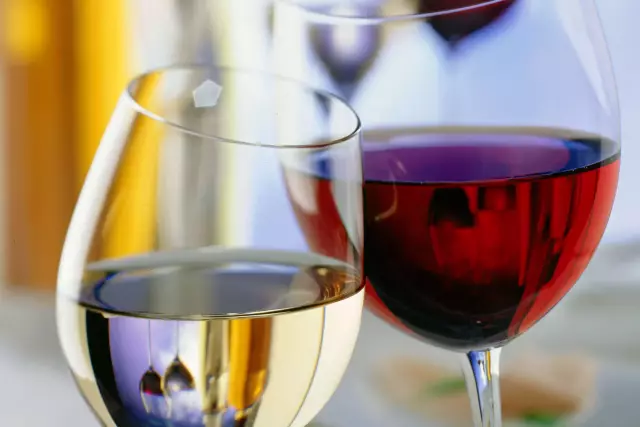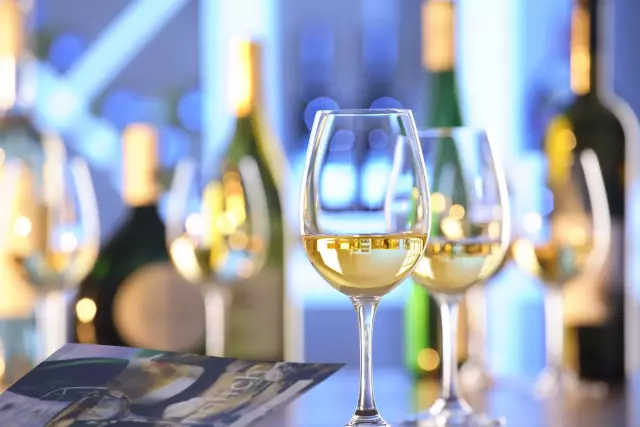Wine Crystals

To set the record straight: tartrate crystals in wine, known as "Weinstein" in German, are neither harmful nor a sign of poor quality; on the contrary, they are characteristic of wines that are rich in minerals.
Tartrate Crystals – a feature of fine wine
While tartrates can crystallize in young wines, they are most likely to precipitate in older, top-quality wines, such as Auslese, Beerenauslese or Trockenbeerenauslese. The tiny crystals that form on the bottom of the cork or on the sides of the bottles are the mark of a wine that has had the benefit of long bottle aging.
Layers of tartrate deposits slowly develop on the walls of wine barrels, too. When illuminated, the interior of an old cask resembles an icy cave full of glistening crystals.
How do Crystals Develop in Wine?
Riper grapes have higher levels of tartaric acid. The longer grapes ripen on the vine, the longer they have to absorb minerals from the soil. Little by little crystals can develop when these minerals come into contact with tartaric acid. Rather than dissolving in the wine, they precipitate and form a deposit on the sides or bottom of the bottle, on the cork, or on the inside of the barrel.
Crystals in the Bottle – More Aroma in the Wine
Although tartrate crystals do not influence the quality of a wine, there is an interesting correlation between the two. Slow fermentation at low temperatures helps conserve a wine¹s aroma compounds. It also results in tartrate deposits developing later, in the bottle, rather than while the wine is still in the barrel. As such, crystals can be regarded as the mark of a good winemaker and a wine of quality.
Another kind of wine crystal
Fine, almost dust-like crystals are sometimes found in high-quality Auslesen, Beeren- and Trockenbeerenauslesen or ice wines. However, this is usually not tartaric crystals in the proper sense, but natural calcium salts that have precipitated due to higher storage temperatures. In addition, a so-called deposit often forms in rich and tannin-rich red wines. This rather powdery, dark-colored sediment is created from tannins and pigments that combine with age and sink to the bottom.
Neither these nor the tartaric crystals harm the wine in any way and do not reflect the quality. It is more of an aesthetic issue that it is not desirable in the glass. Pouring the wine gently leaves the tartar in the bottle. In the case of red wines, decanting beforehand helps - ideally in front of a light source, which makes it easy to see whether the sediment remains.
topical page: quality standards
topical page: grape varieties
What is "gushing" and what role do tartrate crystals play in it?
Tartrate can become a problem in carbonated beverages and especially in sparkling wine, as it offers many so-called condensation nuclei for the carbonic acid. It is released at these points and extreme foam development occurs - gushing.
Varietals

More recipe ideas
Wine recommendation: A white wine with a mellow flavour such as Pinot Gris or Chardonnay. Asparagus risotto al scampi
Risotto with green asparagus, scampi and parmesan.
- 400g Grüner Spargel
- 200g Küchenfertige Scampis
- 200g Risotto-Reis
- 250ml Trockener Weißwein
- 500ml Gemüsebrühe
- 50g Parmesan
- 1 Zwiebel
- 4EL Olivenöl
- 1Dose Safranfäden
- etwas Salz und Pfeffer
Peel the lower third of the asparagus and cut off the ends. Cut into 2 cm long pieces, cook in boiling salted water for approx. 5 minutes and drain. Cut the onion into thin slices and finely chop the garlic.
<p
<p>Heat 2 tbsp of oil, add the onion slices, garlic and rice
.
sauté until translucent. Deglaze with the white wine. Season with salt, pepper
and saffron to flavour. Add a little stock, bring to the boil and simmer, stirring constantly. Gradually add the remaining stock and simmer until the liquid has been absorbed by the rice. The rice should still have a bite on the inside.
Wash the scampi and grate the Parmesan. Heat 2 tbsp oil in a pan and fry the scampi for approx. 4 minutes. Season with salt and pepper. Stir the asparagus, scampi and parmesan into the risotto and serve.
Wine recommendation:
A white wine with a mellow flavour such as Pinot Gris or Chardonnay. Alternatively, a well-chilled, light Trollinger or Blanc de Noir from Pinot Noir.
<p- Pinot Gris (extra brut)
- Chardonnay (extra brut)
- Trollinger (brut)
- Spätburgunder / Pinot Noir (brut)
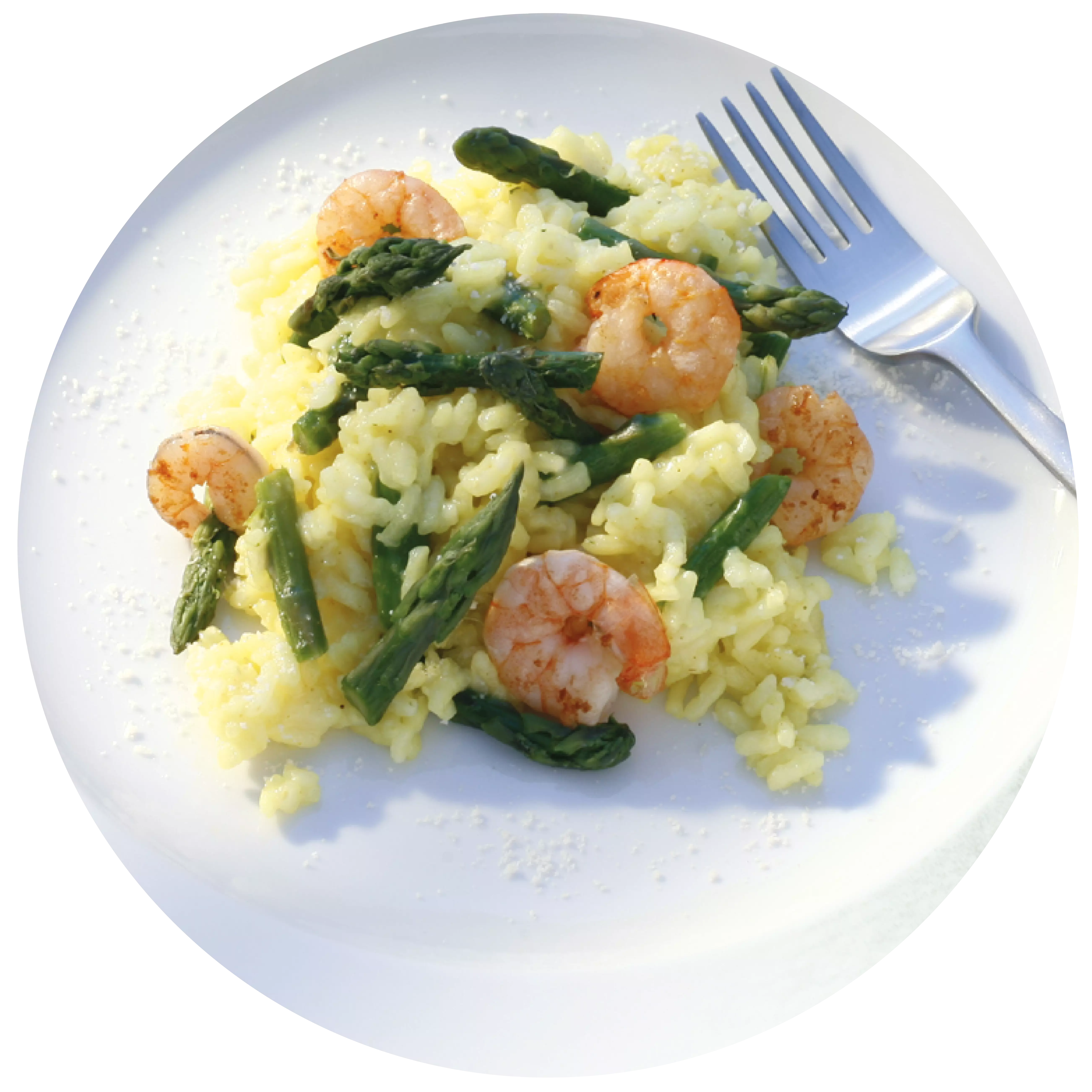
with herb crust Roast turkey
with herb crust
- 600 Gramm Putenbrust am Stücke
- 0,25 Liter Weißwein
- 0,25 Liter Gemüsebrühe
- 4 ganze Tomaten
- 4 Scheiben Toastbrot
- 2 ganze Eier
- 2 Stück Zwiebeln
- 75 Gramm geriebener Emmentaler
- 1 Stange Porree
- 1 Bund Schnittlauch
- 1 EL Olivenöl
- nach Belieben Salz & Pfeffer
Wash the meat, pat dry and cut a deep pocket lengthways. Crumble the toast. Wash and chop the herbs, peel and dice the onions.
<p
<p>Preheat the oven to 200°C (top and bottom heat). Place the bread, herbs, onions, cheese and eggs in a bowl, mix thoroughly and season. Stuff 2/3 of this mixture into the turkey breast. Pin the opening with wooden skewers and tie up crosswise with kitchen twine. Place the roast in a roasting tin and brush with oil.
Roast in the preheated oven for approx. 1 hour. Gradually pour in the white wine and vegetable stock.
<p
<p>Clean and wash the vegetables. Cut the leek into pieces and add to the roast with the whole tomatoes after 30 minutes.
About 20 minutes before the end of the cooking time, spread the remaining third of the herb mixture over the roast and finish cooking.
Arrange on plates with the vegetables and serve. Serve with rice.
- Pinot Gris (trocken)
- Chardonnay (trocken)
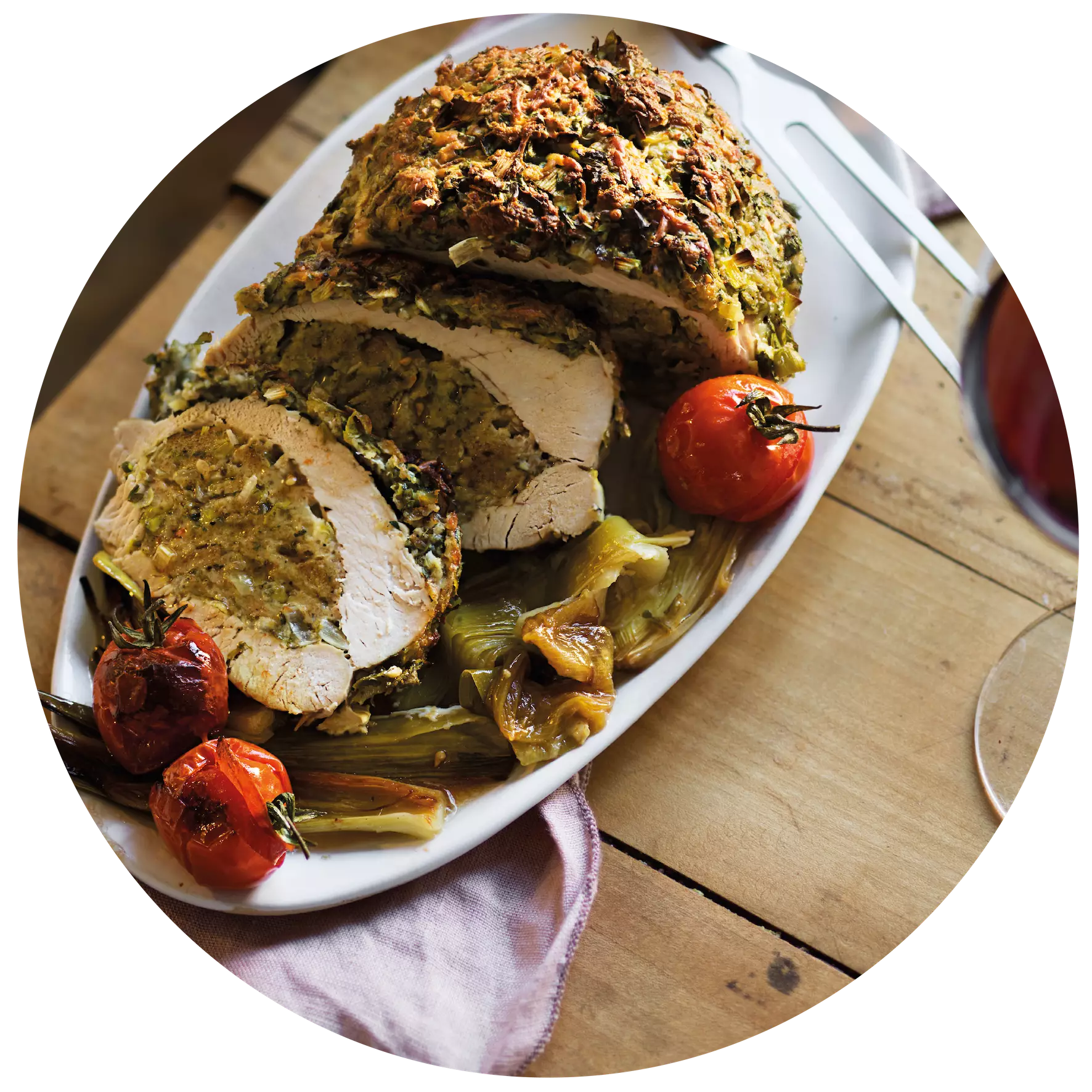
with chanterelle and onion leek, served with potato and grilled cheese ragout in grilled tomato Chop of Hunsrück veal
with chanterelle and onion leek, served with potato and grilled cheese ragout in grilled tomato
- 4 x 300 Gramm Kotelettes
- 250 Gramm Pfifferlinge
- 4 große Kartoffeln
- 2 große Grilltomaten
- 180 Gramm Flammkäse
- 50 Gramm Knollensellerie
- 200 ml Spätburgunder
- 200 ml Sahne
- 50 Gramm Butterschmalz
- 2 EL Butter
- 1 EL Rapsöl
- 6 Stück Lauchzwiebeln
- 1 kleine Knoblauchzehe
- je 1 Zweig Thymian & Rosmarin
- je 1 TL Majoran & Oregano
- nach Belieben Salz & Pfeffer
Peel the potatoes, celery and garlic clove, crush the garlic and cut the potatoes and celery into small cubes. Heat the rapeseed oil in a pan, add the potato and celery cubes, sauté briefly and top up with ⅔ of the cream. Season with salt, pepper and the crushed garlic and leave to simmer for approx. 6 minutes. Add the oregano, marjoram,
add a little thyme and the diced flambé cheese and remove from the oven immediately.
Season the veal chops with pepper, fry in the pan in hot clarified butter for approx. 3 to 4 minutes on both sides and then cook in the oven at 160 degrees for 8 to 9 minutes. Then leave the meat to rest briefly.
Cut the grilled tomatoes in half, remove the skin, place on a baking tray and fill with the potato and flambé ragout. Place the baking tray in the oven with the chops for approx. 6 - 7 minutes. Add 1 tbsp of butter and the sprig of rosemary to the roasting mixture, deglaze with the Pinot Noir, reduce a little and refine with the remaining cream. Season to taste with salt and pepper.
Clean the chanterelles and spring onions. Wash the spring onions well, cut into 5 cm pieces, blanch briefly in salted water and rinse in ice water. Heat 1 tbsp butter in a pan, add the chanterelles and sauté for 2 - 3 minutes. Add the spring onions and the rest of the thyme and season with salt and pepper.
<p- Riesling (trocken)
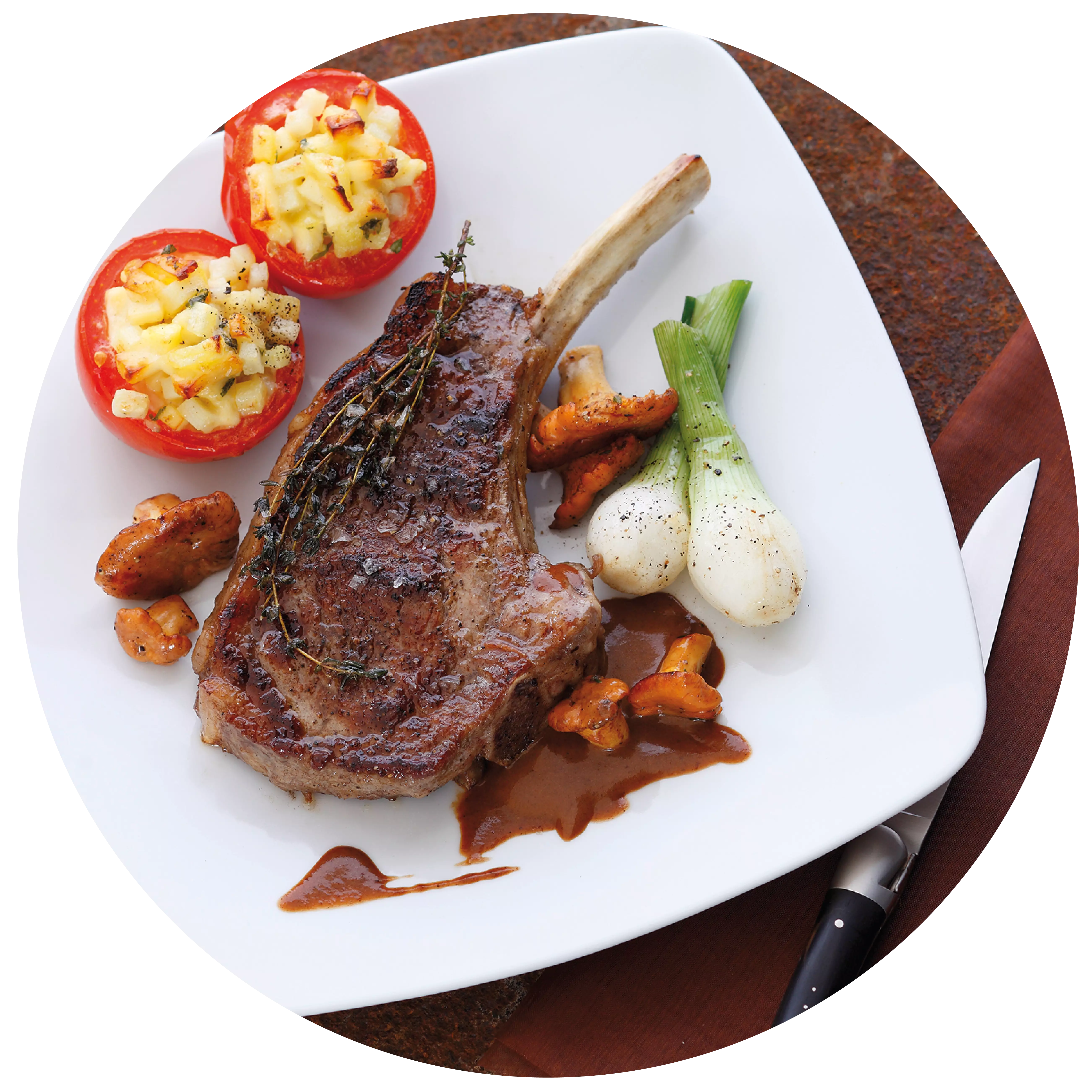
with wild duck breast, porcini mushrooms and glazed chestnuts Herb salad
with wild duck breast, porcini mushrooms and glazed chestnuts
- 150 Gramm Wildkräuter
- 4 EL Olivenöl
- 2 EL Balsamessig
- 8 Stück Wildentenbrüste (a 100g)
- 2 EL Sonnenblumenöl
- 4 EL Honig
- 1 EL Thymian
- 200 Gramm Steinpilze
- 20 gekochte Maronen
- 100 ml Apfelsaft
- 2 El Zucker
- nach Belieben Salz & Pfeffer
Clean, wash and pat dry the wild herbs. Marinate with olive oil and balsamic vinegar and season with salt and pepper.
Preheat the oven to 220°C top and bottom heat. Season the wild duck breasts with salt and pepper, sear on the meat side in a pan with sunflower oil and cook in the preheated oven for about 8 minutes on the skin side. Remove the duck breast, brush the skin side with honey and thyme and roast for another 2 minutes on a high heat until crispy.
Clean the porcini mushrooms and cut into slices. Fry in a pan in oil on both sides, remove and keep warm. Caramelise the sugar in the pan, deglaze with the apple juice and simmer until the caramel has dissolved. Add the chestnuts and add a little more apple juice if necessary.
- Pinot Blanc (trocken)
- Gutedel (trocken)
